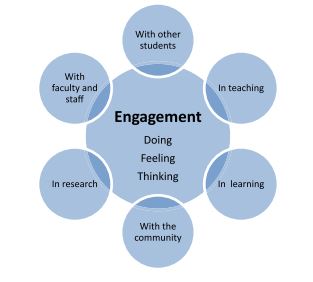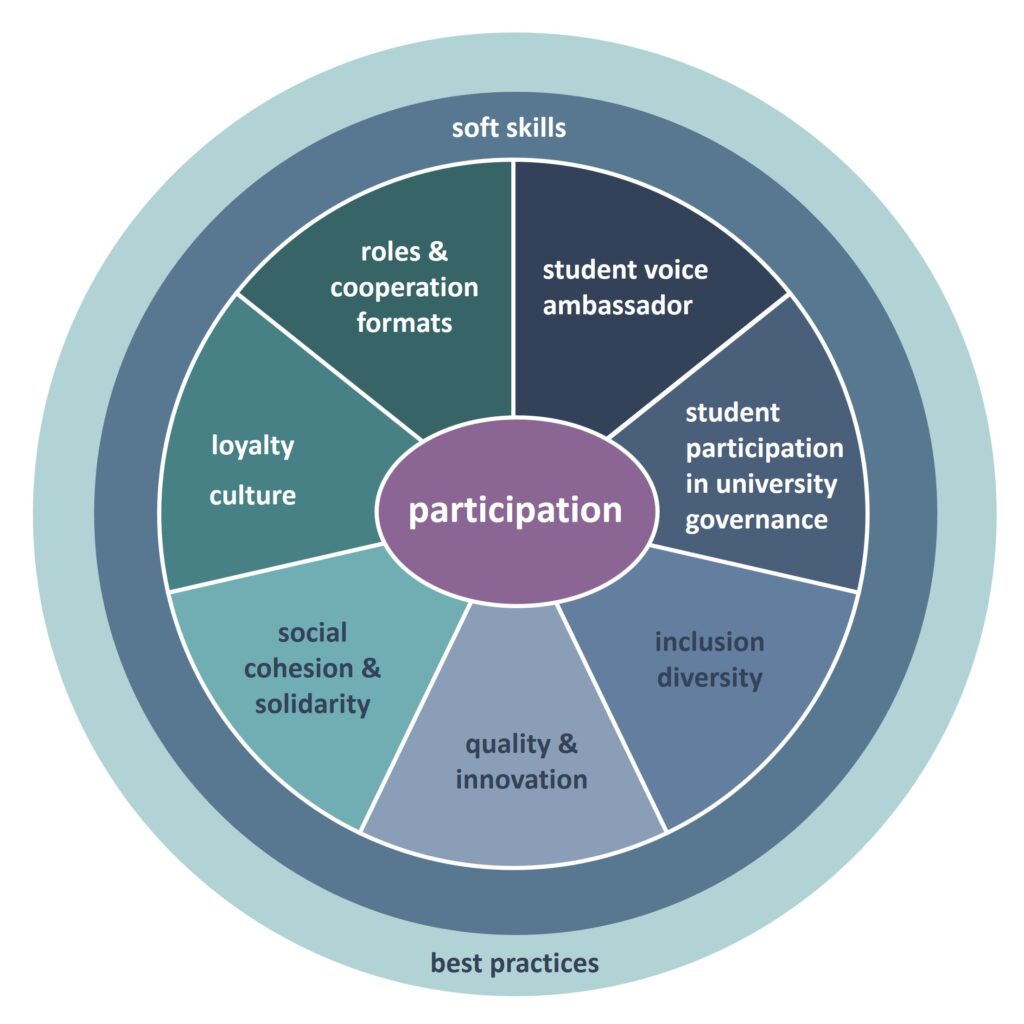What is student participation?
Student participation in higher education governance in Europe is implemented on a high level. Students are seen as constructive partners who have the possibility to involve in different areas and at different levels of governance structures.
Various definitions try to catch the idea of student engagement. While most of them focus on the aspect of participation in learning activities and engagement in the classroom, we decided to use a more diverse approach which considers multidimensional levels of participation. Therefore, we took Groccia and Hunter’s (2012) model of student engagement as a basis.
Groccia and Hunter’s model of student engagement

Students have various opportunities to involve in activities both within the HEI and with external entities. The wide range of participation possibilities enable students to engage in issues concerning teaching quality, organizational aspects respectively governance structures as well as in social and cooperative facets of their student life. Thereby, behavioural involvement (doing) goes with emotional engagement (feeling) and results in cognitive engagement (thinking/reflecting).
The project follows a holistic approach. We want to guide students not only through the formal process of participation but also address them on an emotional level. Like Groccia (2018) stated, emotional engagement results in improved motivation and enjoyment.
Emotional involvement as precondition of participation? We asked students who already participate about the “spirit of participation”, learn more about their private motives for participating.
Drivers of student participation
The aim of higher education is not only to collect professional know-how, but also to prepare students for the challenges and opportunities life may offer. Being an active participant of a community goes hand in hand with the capability to exchange ideas, raise one’s voice, accept different opinions and practice critical thinking.
Student participation in university governance, academic quality & innovation, social cohesion & solidarity form the framework or foundation of student participation. Our project consortium intends to provide support at all three levels of engagement. To summarise the main objectives of the STUPS project:
- To empower students to use the democratic structures of their university to place their concerns.
- To create a sense of belonging to the university and the (learning) community to increase willingness and motivation to participate.
- To reflect on student’s role within the university (partner, co-creator etc.) and particular in relation to quality and innovation.
- To provide students with opportunities to develop social skills, critical thinking, and social responsibility through participation in university, student, and social affairs.
Learn how to raise your voice!
We are very happy that you have found your way to this website. It is more than an information site, rather it is an online learning system that offers you different ways to learn how to raise your voice.
To give you a deeper and more personal insight, we asked student representatives ….
What are the issues that particularly interest you in your role as a student representative?
Student representatives of the University of Applied Sciences Upper Austria.
